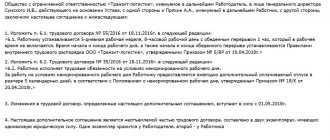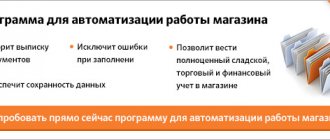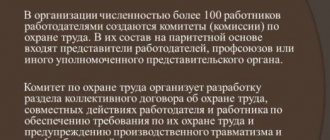Regardless of the size of the company, a recruiter should understand how the team will grow. Simply put, who will need to be hired and when. A recruiting plan is the best way to make the hiring process easier and more efficient.
A strategic plan is important not only to fill vacancies quickly, but also because poor recruiting decisions tend to be costly. By developing a plan in advance, you can save time, money, and attract the best talent.
Creating a recruitment plan that is relevant to today's dynamic labor market is challenging. We will tell you how to do this:
- Analyze the company's needs
- Create a hiring plan and calendar
- Determine the necessary tools
- Define Requirements
- Make a budget
- Optimize and adapt to changes
What is a recruiting plan?
An employee search plan is information about how many employees will need to be hired in the future. It allows you not only to find employees on time, but also to select them in accordance with the company's goals.
It states:
- Job Information
- Time frame within which vacancies must be filled
- Budget Information
- Tools for searching and assessing candidates
PROCEDURE FOR CALCULATING THE NEED FOR NEW EMPLOYEES
The Company's need for personnel is determined on the basis of data on the development of the organization's business, business plans of divisions and is forecast for the year. In accordance with department development plans, managers establish new positions. Calculation of the need for new positions is carried out jointly with the responsible specialist of the personnel department. The HR Director approves the need for new employees and transmits the data to the HR department. Each new position is included in the staffing table. 3.1. Data for calculating personnel requirements To calculate the need for new employees, the following data is taken into account: – personnel turnover in the Company and the industry average; – seasonal changes in the labor market, decreases and increases in activity in the labor market; – offers from universities; – seasonal epidemics of viral diseases; – maternity leave; – by the time of absence of employees on long business trips; – increasing jobs in accordance with the expansion of production; – vacating positions as a result of the implementation of an individual career program and promotion of employees to management positions; – rotation of management personnel to branches and subsidiaries. 3.2. Calculating the workload of the personnel selection department The personnel selection department calculates the average number of open vacancies per month. Based on the average number of needs for new employees, the workload of specialists in the personnel selection department is calculated. The HR Manager distributes the workload among recruiters and submits a monthly report to the HR Director. Section 4.
Analyze what specialists the company needs
The first step to creating a good recruiting plan is to figure out what talent you're missing and where there are skills gaps that need to be closed. You should start by analyzing the company's growth prospects in the near future. It is definitely worth considering staff turnover and upcoming promotions, as this directly affects the needs of the company.
Assess which departments will need new people. Perhaps you are launching a new project or an important team member is leaving - all these details should be taken into account.
It is important to examine what skills your team is missing and which ones will be needed in the near future. This takes a lot of time, especially if the company is large. However, this approach will allow you to be proactive and be prepared in advance for the upcoming work.
Create a plan and calendar
The most important thing is to put the information you receive into practice and make a plan. It should indicate the number of employees each department will need and when they will need to be hired. This will help you hire employees on time. For example, if you need to fill a vacancy in the 3rd quarter, you should start preparing as early as the 2nd quarter in order to fill the vacancy on time.
Using this information, you can create a recruitment plan for the year. This should include information about the vacancies to be filled each quarter, the total number of employees in the department, and deadlines for each position.
Figure out what tools you'll need
Once you have a recruiting calendar and plan in place, it's worth identifying the tools you need to execute it. For example, you can use applicant tracking systems (ATS), aggregators to find candidates. It is also worth taking care of assessment and preliminary testing of skills before hiring.
Recruiting tools will help not only organize, but also optimize the hiring process, automate some tasks and improve the candidate selection process. It’s not enough to invest in tools for working with candidates; it’s important that the entire team knows how to use them and has access to them.
INTERVIEW PROCEDURE IN THE RECRUITMENT DEPARTMENT
In order to improve the quality of recruited personnel, the Company conducts several stages of interviews. 7.1. Procedure for conducting a telephone interview The purpose of conducting a telephone interview is: – to clarify the information provided by the applicant in the resume; – selection of candidates who best meet the requirements specified in the application for invitation to an interview at the Company or transfer to the person responsible for the application. Based on the information received from the applicant, the interviewer forms the results of the interview or the characteristics of the candidate (Appendix 3). 7.2. Procedure for conducting interviews in the selection department The first interview is conducted by a specialist in the selection department who accepted the corresponding application for work. During the interview, the recruiter: – examines the documents submitted by the applicant, makes preliminary conclusions about the compliance of the data stated in the resume; – evaluates the applicant’s business qualities and the results of his professional activities at the previous workplace; – listens to the applicant’s reports on professional activities at the previous place of work; – conducts an objective and friendly discussion of the applicant’s professional successes and shortcomings; – asks the applicant related questions regarding professional activities, education, experience and other data; – makes a presentation of the Company to the applicant, reveals the candidate’s subsequent opportunities for the position after he starts working for the Company. – the purpose of the face-to-face interview is the final selection of applicants for presentation to the person responsible for the application for consideration. 7.3. Professional testing In order to obtain more complete information about the applicant, testing is practiced. The choice of test methods is carried out individually based on the requirements specified in the application for the professional and personal characteristics of the applicant. Completed forms of test methods and quantitative results are confidential and are stored in the personnel selection department accordingly. The characteristics of the test results are presented in the form of a general conclusion in the form of test results for the purpose of transfer to the person responsible for the application. The characteristics of the test results serve as a source of additional information to the interview results, and not vice versa. Based on the results of the interview, the interviewer fills out the “Characteristics of the Candidate” form or makes adjustments to the characteristics already completed based on the results of the telephone interview. The interviewer analyzes the questionnaire, test results, interview and makes a decision on whether the candidate is allowed for an interview with the person responsible for the application. The data of the candidate (resume, questionnaire, test results, characteristics of the candidate) who passed the selection process in the personnel department are commented on and submitted for consideration to the head of the department responsible for the application. Section 8. PROCEDURE FOR CONDUCTING INTERVIEWS IN THE DIVISION The specialist of the personnel selection department will organize an interview of the candidate with the head of the division or his representatives responsible for the application. Representatives of the department responsible for the application report the results of the interview to the personnel selection department within three days. The final stage of the interview and the decision to hire is carried out by the director of the Company, after which the candidate is given a job offer and together with him the date of his return to work is determined, which are recorded in the order after the applicant’s application for employment. Filling out a questionnaire by a candidate, reviewing the candidate’s documentation, testing, interviews, checking the data provided by the candidate, and completing an internship do not guarantee employment. If a candidate does not pass the competition for a number of reasons, he is entered into the database of applicants (in the reserve of applicants). Section 9. CONTROL AND RESPONSIBILITY 9.1. Responsibility of the HR Director The Company's HR Director is responsible for the proper organization of work to provide personnel to the Company. 9.2. Responsibility of department heads Heads of structural departments are responsible for providing all necessary information, correctly filling out the application and complying with the personnel selection process in accordance with these Regulations. 9.3. Responsibility of the Head of the Recruitment Department The Manager of the Recruitment Department is responsible for organizing the quality work of the Recruitment Department. 9.4. Responsibility of the HR specialist. The specialist in the personnel selection department is responsible for the high-quality and timely implementation of procedures for recruiting personnel, conducting testing, organizing and conducting interviews with candidates for a vacant position, provided for in these Regulations.
Determine the requirements for each position
With a clear understanding of what positions people are needed for, you can begin to define the requirements for each position. What skills should candidates have? What duties will they perform?
Make sure you have covered all the necessary requirements needed to perform effectively in your position. Don't forget that by preparing in advance, with a personnel selection plan, you have a better chance of finding the ideal employee.
Optimize your plan as you go
Use feedback and analytics to optimize your recruiting plan. Send an anonymous survey to collect feedback from new hires. How was the interview and selection process? Which part was done well and which part could have been better?
Review key metrics: time, quality, early turnover rates, and cost per hire. Then, based on this information, find ways to improve your hiring process. Just as the job market and recruiting industry are constantly evolving, your plan should also evolve over time.
We draw up regulations (using the example of office work business processes)
At a certain stage of its development, an organization has to regulate its main business processes, i.e. describe the progress of their implementation in local regulations. A document such as a regulation covers the process step by step, which is being worked on in several departments at once. It is unlikely that the secretary will be entrusted with the development of regulations for a complex production process, but it is quite likely for office work.
This article examines the regulations as a type of document, its structure and basic details, and also provides an example of the regulations for one of the most important processes in a preschool educational institution - monitoring the execution of tasks according to documents.
REGULATIONS AS A DOCUMENT
Our dictionary
A regulation in a commercial organization is an organizational and administrative document that describes a specific business process step by step from its beginning to its completion.
The regulations are strictly individual and can only apply to the organization that has approved them for itself. Thus, when drawing up instructions for office work, GOST R 6.30-2003 “Unified documentation systems” is usually used. Unified system of organizational and administrative documentation. Requirements for the preparation of documents" and Methodological recommendations for the implementation of GOST R 6.30-2003. Based on these documents, internal instructions are created both in a small store and in a federal-level JSC. But, for example, the procedure for passing internal documents established in one organization may be completely unsuitable for another.
Having familiarized himself with the regulations, a new employee of the department must understand what his tasks are and promptly get involved in the process.
Typically, business process regulations are developed by representatives of a consulting company invited to the organization. But they cannot do it without the help of workers who carry out these processes every day.
When several structural units are involved in a business process (this process is called end-to-end), one regulation can replace lengthy internal correspondence. After all, an employee of one department cannot obey the boss of another, so why should he take the baton and carry out some actions without the order of his immediate supervisor? Under normal conditions, department heads have to enter into correspondence. If there is a regulation, then employees of different departments are involved in the implementation of the process without waiting for instructions “from above”.
What processes are subject to regulation?
Having separate regulations for all work processes is undoubtedly very convenient. However, this medal also has a flip side, namely:
- regulation requires serious financial investments: good consultants are expensive, as is the working time of their own employees;
- any process is constantly evolving: new technical working conditions appear, new, differently trained people come to carry it out, and the process diagram drawn up today may change beyond recognition in a year. This also needs to be monitored, which means new costs;
- the approach to performing a process where “a step to the side is tantamount to running away” does not encourage employees to show initiative, and no one, ultimately, will be able to optimize the process better than those who directly work on it;
- The implementation of the regulations is almost guaranteed to entail resistance from workers, both direct participants in the process and numerous “sympathizers.” Overcoming resistance is a whole stage of implementing regulations, requiring both time and material resources.
Thus, standard processes are primarily subject to regulation. They will always be carried out in the organization, regardless of the external situation. The list of processes that are subject to regulation in a particular organization is compiled strictly individually, based on many factors.
STRUCTURE AND CONTENT OF THE REGULATIONS
As a rule, the regulations consist of the following main sections:
- General provisions.
- Terms, definitions, abbreviations.
- Process description.
- Responsibility.
- Control.
The contents of the sections of the regulations are presented in more detail in the table.
| Chapter | Section Contents |
| General provisions |
|
| Terms, definitions, abbreviations | Definition of terms and explanation of abbreviations used in the text of the regulations. The terms are listed in alphabetical order. Each of them is written on a new line in the singular, and its definition is indicated through a dash without the word “this”. It is advisable to use legislative acts, state standards and other regulatory documents as a source of definitions |
| Process description | Step-by-step description of the process. For convenience, this section is divided into subsections, each of which corresponds to the next stage of the process. The section indicates the workers involved in the execution, describes the action and the result |
| Responsibility | Responsibility of participants in the process for failure to comply with regulations (disciplinary, administrative, criminal). The latter concerns usually complex production processes associated with risks to the health and life of workers |
| Control | Indication Full name the official responsible for monitoring the implementation of the regulations, as well as, if necessary, means of control |
BASIC DETAILS OF THE REGULATIONS
The main details of the document include:
- name of company;
- date and number of the document, place of its preparation;
- approval stamp;
- Title of the document;
- document text;
- application (if any);
- visa approval.
By the way
The requirements for the registration of the listed details are established by GOST R 6.30-2003. Methodological recommendations for the implementation of GOST R 6.30-2003 explain and specify the procedure for the implementation and application of this standard.
BUSINESS PROCESS MODEL
A business process model can serve as an annex to the regulations. It is customary to depict it graphically (see diagram), but it is also permissible to draw up a table and even describe the process verbally. Graphic models of business processes are created using special software.
What at first glance seems like an intricacy of lines and geometric shapes, in fact, represents a strict order of actions when performing a particular process, in our case, the office work process. The business process diagram is much easier to understand than the text of the same regulations. It clearly shows who starts each stage and where, how they finish it, and who passes the baton to in working on the process.
The graphic model of the business process “Approval of a draft document” presents such key parameters of the business process as inputs and outputs, clients and participants. Each new employee, looking at the model, will quickly become involved in the execution of his process at a certain stage and will know how to behave in any work situation associated with it.
PROCEDURE FOR WORK ON THE REGULATIONS
Working on regulations is no different from working on any other organizational and administrative document: first, a draft document is drawn up, which is agreed upon with interested officials, then it is approved by the head of the organization or a person authorized by him. Finally, the participants in the process get acquainted with the regulations against signature and receive copies of them.
Regulations can be approved in several ways:
- directly (the manager signs the document with his own hand);
- indirectly (by issuing an order) (see Example 1). In this case, the registration data of the order will be included in the approval stamp.
Example 1
Order on approval and implementation of business process regulations
Limited Liability Company "Perspective" (LLC "Perspective")
ORDER
07/23/2014 No. 456-Pr
Moscow
On approval and implementation of business process regulations
In order to improve the paperwork procedures of Perspektiva LLC
I ORDER:
1. Approve and put into effect from 01.08.2014 the regulations for the following business processes:
1.1. Registration and accounting of documents.
1.2. Control of document execution.
1.3. Storage and retrieval of documents.
2. Appoint administrative director A.V. Legostaev responsible for fulfilling the requirements specified in clause 1 of this order.
3. To the head of the office Parshina V.K. ensure that the employees of Perspektiva LLC are familiarized with this order against signature and submit copies of the approved regulations to the structural divisions of Perspektiva LLC by July 30, 2014.
4. I reserve control over the execution of this order.
General Director D.A. Maksimov Maksimov
The following have been familiarized with the order:
Legostaev A.V. Legostaev 07/24/2014
Parshina V.K. Parshina 07/24/2014
P.A. Karpenko
23-78
The regulations for the business process “Control of document execution” are given in Example 2.
Example 2
Regulations for the business process “Control of document execution”
Limited Liability Company "Perspective" (LLC "Perspective")
| APPROVED By order of the General Director Perspektiva LLC dated July 23, 2014 No. 456-Pr |
REGULATION No. 7 of the business process “Control of document execution”
1. General Provisions
1.1. The Regulations of the business process “Control of the execution of documents” (hereinafter referred to as the Regulations) determine the procedure for monitoring the execution of tasks based on documents in Perspektiva LLC (hereinafter referred to as the Organization).
1.2. The requirements and rules of the Regulations apply to all structural units of the Organization.
1.3. The Regulations are approved, amended and canceled by order of the General Director of the Organization.
1.4. Employees of the Organization are required to know and comply with the requirements of the Regulations. All newly hired employees of the Organization must be familiarized by the heads of structural divisions with the established procedure for monitoring the execution of documents in the Organization.
2. Terms, definitions, abbreviations
2.1. The Regulations use the following terms and definitions:
The author of the task is the employee who sent the performer an email message containing the task.
Document is information recorded on a medium with details that allow it to be identified.
A task is an order from a manager.
Task - see task.
Performer is an employee of the Organization who is entrusted with the execution of a task.
Control is a set of actions that ensure timely execution of a document.
A responsible executor is an employee from among the executors who has the right to coordinate the work of other executors. The resolution indicates first.
Resolution is a requisite containing instructions from an official regarding the execution of a document. Includes the surnames, initials of the performers, the contents of the order (if necessary), due date, signature and date.
The leader is the official who makes the resolution.
Due date – calendar date for completing the task. The period for execution of the document begins from the day of its registration in the office of the Organization and is calculated in calendar days. Documents are subject to execution within the following typical deadlines:
– from a specific date of execution – within the specified period, if the document was received by the Organization no later than three days before the expiration of the specified period;
– without indicating a specific execution date and special notes – within 30 days;
– without specifying a specific date, marked “Urgent” or “Immediately” – within three days;
– without specifying a specific date, marked “Promptly” – within 10 days.
3. Process description
3.1. Submitting a document for control.
3.1.1. All registered documents requiring execution are subject to control.
3.1.2. The basis for placing a document under control is the resolution of the General Director of the Organization or his deputy.
The resolution states:
– executor of the document;
– deadline for completing the task;
– if necessary – the content of the task.
3.1.3. Having received the document with the resolution, the secretary of the general director or the secretary of the deputy general director (hereinafter referred to as the Secretaries) prepare a scanned copy of the document with the resolution. The scanned document is placed in the “Under Control” folder.
3.1.4. A copy of the document file is attached to the email message sent to the contractor.
3.1.5. In the email message parameters, you set the deadline for completing the task and enable the option to notify the task author about its receipt.
3.1.6. After receiving an electronic message with a task, the executor sends a notification of its receipt to the author of the task.
3.1.7. If the contractor receives a task, the content of which is beyond his competence, he is obliged to notify the author of the task about this within one working day from the receipt of the task. The author of the task, having received such a notification, submits a document to the manager for a second resolution.
3.2. Completing the task.
3.2.1. The contractor fulfills the task assigned to him within the time period established in the resolution.
3.2.2. If the last day of task execution falls on a non-working day, the document must be executed on the next working day.
3.2.3. If it is not possible to complete the task within the time period established in the resolution, the contractor is obliged to report this to the manager before the deadline expires and explain the reason for the delay. If the reason is valid, the manager can extend the deadline for completing the task.
3.2.4. If the deadline for completing a task was extended by the manager, the author of the task changes the deadline for its completion in the electronic document card.
3.3. Report on the completion of the task.
3.3.1. Having completed the task, the executor generates a completion report, which is sent to the author of the task in the form of an electronic message. The assignment report must be informative and contain a specific description of the actions and measures taken. If a document was required to complete a task, its registration data is indicated in the task completion report.
3.3.2. Having received a report on the completion of a task, the task author sets the status “Completed” in the electronic document card. The document is removed from the “Under Control” folder and placed in the file.
3.3.3. If the author of the task has not received a report on the completion of the task within the time period specified in the resolution, he sends an email request to the executor with a request to indicate the reason for the failure to complete the task. The author of the task reports to the manager about failure to complete the task, attaching explanations from the performer. If the reason is valid, the manager can extend the deadline for completing the task.
3.3.4. If the deadline for completing a task was extended by the manager, the author of the task changes the due date in the electronic document card.
3.4. Generating a report on task completion.
3.4.1. Secretaries generate a monthly report on the completion of tasks based on documents, which they present to the manager.
The report states:
– the total number of tasks assigned during the reporting period;
– number of completed tasks;
– number of tasks with extended deadlines;
– the number of tasks not completed on time.
If there are tasks not completed on time, the names of the performers of these tasks are also indicated.
4. Responsibility
Employees of the Organization, regardless of their positions, bear disciplinary liability for improper execution or failure to comply with the requirements of these Regulations.
5. Control
Control over the implementation of the Regulations is carried out by the administrative director of the Organization.
Organizational and administrative documentation. Documentation requirements. Methodological recommendations for the implementation of GOST R 6.30-2003 (approved by Rosarkhiv).
Why do you need a recruiting plan?
It will take time and effort to create a recruiting plan, especially for the long term. And don’t think that when you finish, you will get absolutely accurate data. Over time, you'll have to adapt and optimize your plan based on your company's needs and how they change over time.
Even if you have information about how many employees the company will need this year, you cannot take into account all the factors. For example, if your company is growing faster than expected and you have to hire more people. But without a plan, it’s much more difficult to work. After all, it’s one thing to optimize an existing strategy, and quite another to not understand the needs of your company at all.
Regulations for the recruitment procedure
By the way a company operates in the labor market and selects its personnel, you can tell a lot about it. Depending on how the personnel selection procedure is organized, a judgment is made about the level of development of the company as a whole. Therefore, the selection procedure must be clearly and competently organized and regulated, that is, the company needs to create and implement regulations for the personnel selection procedure. What are regulations? The regulations are:
- a set of permanent or temporary rules governing internal organization and work procedures;
- a regulatory legal act that establishes mandatory requirements for application and execution;
- a document listing and describing in order the stages that a performer or group of performers must go through to complete a business process within a strictly specified time frame.
The personnel selection regulations are an internal local act of the company that describes the personnel selection process.
It describes the interaction pattern between departments and the decision-making mechanism at each level. This act describes all the steps, from the formation of requirements for a vacant position to the candidate’s entry to work. The regulations are brought to the attention of all employees who are directly or indirectly involved in the selection of personnel in order to clarify all unclear points. The main parameters specified in the regulations on the personnel selection procedure:
- a step-by-step selection scheme with all the necessary steps for the procedure;
- selection deadlines;
- officials responsible for the implementation of activities;
- documents for each event for searching/selecting personnel for vacant positions.
Drawing up such regulations allows you to organize the process in such a way that the selection of personnel always takes place efficiently and within a strictly specified time frame.
The company's internal regulations on the personnel selection procedure are developed based on an analysis of the current personnel situation in the company (what is the scheme for working with personnel, how effectively does it work, what are the internal corporate rules and requirements for employees, how does the interaction between employees within the company take place, and so on).
Also, when drawing up the regulations, all the wishes of the company’s management and its line managers are taken into account.
Main activities subject to regulation:
- approval of an open vacancy (decision on the advisability of opening it);
- formation and approval of an application for personnel selection;
- determining the basic requirements for the candidate;
- interaction between employees within the organization and with the involvement of external sources during the search and selection of candidates (selection of search methods and places, formation of databases of resumes and applicant profiles);
- conducting interviews, interviews and approvals;
- testing for various positions (at the request of management);
- candidate assessment;
- mechanism for making decisions on the approval of new employees and offers of employment.
The company’s adoption of the personnel selection procedures allows for the following:
- all employees have equal opportunities for professional and career growth and for the realization of personal potential;
- rational use of working employees and effective distribution of workloads;
- effective selection of employees with the necessary qualifications and professional skills.
The use of agreed and approved regulations when recruiting personnel is necessary, first of all, at large enterprises.
In small companies, the process described in the regulations can be slightly simplified by combining or shortening individual procedures. Such actions are permissible if the work of interacting departments is built in a manner of trust, decisions are agreed upon without conflicts, and all agreements reached verbally are subject to unquestioning implementation. The personnel selection procedure must guarantee:
- high professionalism of recruitment specialists;
- sequence of procedures;
- openness of selection criteria;
- absence of discrimination based on gender, age, race and other characteristics not related to the business qualities of employees.
The main purpose of the regulations is to make the selection mechanism more streamlined, so that it does not function from time to time and disrupt the work of the company, but has a regularly verified character.
That is why reputable companies must approve regulations for the personnel selection procedure, which also helps to develop a comprehensive personnel concept for the company, calculate long-term personnel needs, develop programs for the selection, training and retraining of employees, and develop programs for professional and career growth of specialists. The personnel selection regulations are an integral system of full-cycle procedures for introducing a new employee into the current “organism” of the company. For successful introduction, appropriate job descriptions must be developed for everyone involved in the selection and a package of necessary “personnel” documents.
If your company is interested in creating regulations for the personnel selection procedure, but does not know how to do this, contact our personnel service and our specialists will be happy to help you with this.










